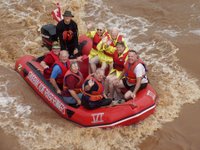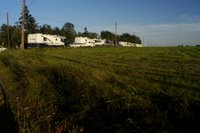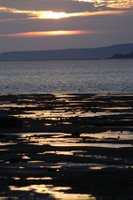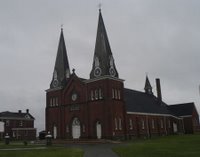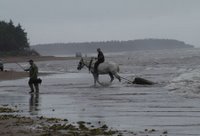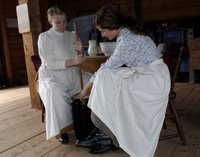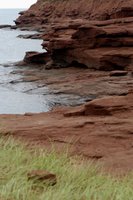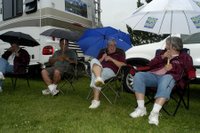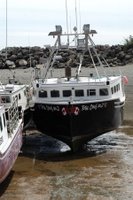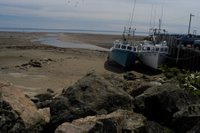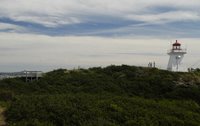This is what we did on July 27…
Today, we traveled from the village of Noel to Annapolis Royal, Nova Scotia. On the way there we stopped at Grand Pre’ National Park.

At Grand-Pré, we get to know the Acadians, Nova Scotia’s early French settlers. Theirs is a story of pioneer life, tragedy, and triumphant survival. This commemorative site was the heart of the 17th- and 18th-century Acadian village that became the scenic setting for Longfellow’s enduring narrative poem Evangeline, and includes a church and an unmarked Acadian cemetery. This is a photo of the re-built church and statue of Evangeline.
The Acadians farmed along the shores of the Bay of Fundy and Minas Basin, building dykes to hold back the high tides and planting grain on the reclaimed salt marshes. Although the Acadians remained politically neutral during the French-Anglo Wars, the British saw their presence as a threat and, in 1755, colonial officials expelled them from Nova Scotia. In 1995 the Grand-Pré area was declared Canada’s first Rural Historic District.

Ongoing archeological digs are locating building stone foundations and other artifacts of the Acadian inhabitants that were forcibly removed and their village burned by the British authorities. The Acadians were scattered amongst the other English colonies and some were sent back to France. Many families were split apart, never to see their loved ones again. They were not always welcomed in the other English colonies and that forced them to move from area to area until finally settling in places like Louisiana.
Many Acadians did find their way back to their beloved north and reestablished communities in areas that were once theirs exclusively. The British, after removing the Acadians, transported Englishmen into the areas to take over the rich lands and assist in controlling the seaways. Although many of the villages were burned, some towns were merely renamed and resettled by these new residents. Annapolis Royal is one such renamed town.
After our visit to Grand Pre’, we drove on to our campground in Annapolis Royal. We got things set up and then had a relaxing picnic dinner with out travel buddies, followed by delicious Nova Scotia ice cream.

Later in the evening many of us went on a fun graveyard tour in Annapolis Royal. The guide was dressed in Victorian mourning suit and gave a very informative historical tour of the graveyard. He traces his family back to the original Acadian settlers in this town and shared some of his family’s trials of getting back to this settlement. As we toured, the fog moved into the graveyard to lend an eerie feeling to it all.













